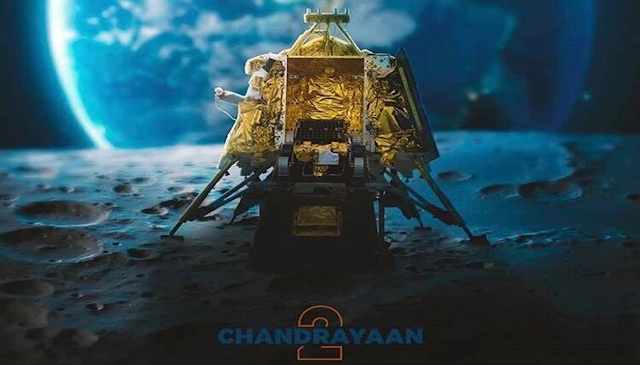TL:DR
- To India: You're in good company
- Why the Lunar South Pole?
Dear India,
So... your lunar lander crashed on the moon last week. Although the Chandrayaan-2 orbiter remains fully operational and has years of fantastic science ahead of it, I along with the rest of the world was devastated to hear that the Vikram lander and Pragyan rover lost contact a mere 2.1 km over the lunar surface. No picture distills India's heartbreak more than Prime Minister Narendra Modi hugging an inconsolable K. Sivan, the head of the Indian Space Research Organization (India's NASA)
 |
| Sivan couldn't hold back the tears as he thanked Modi for his morale-boosting speech to the dejected scientists at Mission Control in Bangalore |
But before you get too down on yourselves, let's take stock of the facts: 1) space is REALLY hard (obviously), and 2) India is trying to be just the fourth country in history to land a probe on the moon, after the USSR/Russia, the USA, and China. A quick scan of Wikipedia reveals just how hard your predecessors struggled to reach the Earth's cosmic companion, despite enjoying much fatter budgets (though admittedly older technology) - check out the Soviet Union's comically disastrous Luna E-3 No. 2 (rocket disintegrated ten seconds after launch) and the American Ranger 4 (missed the Moon by 22,862 miles!) And in more recent times, just last April Israel's Beresheet lander slammed into the lunar surface at over 500 km/hr after an unexpected main engine cutoff
 |
| Just a snippet of the countless launch failures in our exploration of the moon |
I'm also inspired by the outpouring of support from people expressing how proud they are of the ISRO despite the failure, and what an honor it is to witness such a monumental mission. Here in the US, when I talk about space the inevitable reaction I so often get is people questioning why Congress should funnel our taxpayer dollars into space exploration when we have so many problems here on Earth. The US's GDP per capita is 30x India's; what benefit would an impoverished Indian citizen reap from a $140mm moon mission? You're right, probably none. But millions of Indian children stayed up all night watching Chandrayaan-2 approach the moon - many of them will become scientists, and they will build the future for their nation and the world. We Americans have no excuse not to do the same
 |
| Students in Sriharikota on India's east coast watching the launch of Chandrayaan-2 in July | Credit: NYT |
So don't be discouraged, India. Your space program has a stellar future ahead of it, with the first Indian astronauts (known as vymonauts) to launch in 2022 and a Chandrayaan-3 mission in partnership with Japan already in the works for 2024! What I witnessed wasn't a mission failure; what I saw was a billion citizens from the world's largest democracy united by a common goal, joined by an entire world cheering them on as we looked to the heavens and dreamed of something more. The lunar south pole awaits our exploration, as long as we are bold enough to go
 |
| 2.1 kms short, but 1.3 billion heartbeats strong. Sending my support for the ISRO all the way from the USA! |
But why the Lunar South Pole?
Let's also not forget that Vikram wasn't targeting just any spot on the moon, the lander was shooting for the lunar south pole, a region still unexplored by any nation to date. All the old Soviet unmanned probes and American Apollo missions landed on the near side of the moon relatively close to the equator, which is way easier to reach and communicate with. China's Chang'e 4 probe only recently pulled off the first landing on the far side of the moon, and it needs the special Queqiao relay satellite to be able to communicate with Earth. But as the world looks to return to the moon, this time to build a permanent manned presence, the consensus is basically unanimous that the south pole is the prime lunar real estate. Why?
 |
| Notice the two proposed landings at the south pole, one of them being Chandrayaan-2 | Credit: BBC |
Two words: ice and shadows. After the Apollo missions we assumed the moon was bone dry, but since 2009 NASA's Lunar Reconnaissance Orbiter has found massive deposits of ice in the perpetually shadowed craters of the lunar south pole that could supply a moon base with millions of tons of water. This water is for more than just drinking. Water can be broken down into oxygen and hydrogen and liquified into rocket fuel, so launching cargo from the moon might turn out to be super cost effective, given the moon's weaker gravity. It's only a matter of time before countries and companies set up shop!
 |
| Blue dots show deposits of ice at the lunar poles |



No comments